Although many might imagine most free music as intense and raucous, the first adjective may be applied, but the second is sparingly used for the special sounds created by these five reed-keyboards duos. Some may argue that chamber-improv foreshortens the creative urge; however these duos have come up with various strategies to project multiple timbral arrangements without bluster or bellicosity.
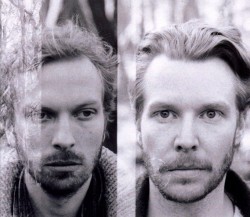 Recorded in a venerable spacious church in Copenhagen, Locusts and Honey (ILK Records 349 ilkmusic.com) was created by two Danish residents who are both from other countries. Pianist Matt Choboter is Canadian, while alto saxophonist Calum Builder is Australian. Putting aside any country-associated shibboleths, both players operate in the realm of pure sound with the nine improvisations reflecting the church’s spatial properties as well as Builder’s extended reed techniques and the preparations of Choboter’s keyboard. Harsh squawks and irregular trills issue from the saxophonist, yet are balanced by passages in which muffled snarls dissolve into distant no-key-pressure moments as unaccented air is pushed through the horn. Celeste-like tinkles and suspended echoes share space with wood slaps, inner string jiggling and soundboard hammering from the pianist. Duo synergy is reflected on a track like Crossing on Akróasis when understated saxophone vibrations and horizontal key pumping create a delicate, almost mainstream expression. More compelling are those performances when seemingly incompatible motifs amalgamate as kindred expressions. Honey for instance manages to meld as reflective patterns, Builder’s deep inside the body tube hunting-horn-like resonance and Choboter’s implement juddering piano string clangs. Needle-thin top-of-range snarls from the saxophonist on Hark! are balanced by music-box-like chiming created by subtle piano string agitation. This leeches tension from the reed tones to attain a muffled connection.
Recorded in a venerable spacious church in Copenhagen, Locusts and Honey (ILK Records 349 ilkmusic.com) was created by two Danish residents who are both from other countries. Pianist Matt Choboter is Canadian, while alto saxophonist Calum Builder is Australian. Putting aside any country-associated shibboleths, both players operate in the realm of pure sound with the nine improvisations reflecting the church’s spatial properties as well as Builder’s extended reed techniques and the preparations of Choboter’s keyboard. Harsh squawks and irregular trills issue from the saxophonist, yet are balanced by passages in which muffled snarls dissolve into distant no-key-pressure moments as unaccented air is pushed through the horn. Celeste-like tinkles and suspended echoes share space with wood slaps, inner string jiggling and soundboard hammering from the pianist. Duo synergy is reflected on a track like Crossing on Akróasis when understated saxophone vibrations and horizontal key pumping create a delicate, almost mainstream expression. More compelling are those performances when seemingly incompatible motifs amalgamate as kindred expressions. Honey for instance manages to meld as reflective patterns, Builder’s deep inside the body tube hunting-horn-like resonance and Choboter’s implement juddering piano string clangs. Needle-thin top-of-range snarls from the saxophonist on Hark! are balanced by music-box-like chiming created by subtle piano string agitation. This leeches tension from the reed tones to attain a muffled connection.
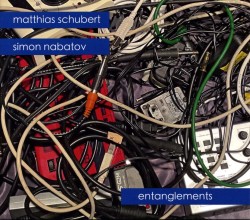 Enhanced textures also characterize the work of another duo, each member of which is an accomplished improviser on an acoustic instrument. Here though, heightening timbres are added from the live electronics used by Russian-American pianist Simon Nabatov. The oscillations’ span suggests the addition of a third instrument to Nabatov’s keyboard on Entanglements (Acheulian Handaxe AHA 2301 handaxe.org) recorded with fellow Cologne resident, German tenor saxophonist Matthias Schubert. Free jazz despite the additional voltage, Schubert’s Trane-like tongue slaps, overblowing and siren-like honks are not only integrated into the narratives, but given added oomph when live processed or cushioned by the oscillations. At the same time, Nabatov’s acoustic piano patterns include enough crashing chords and sympathetic plinks to preserve the improvisational aura. Brushed is an instance of this as the saxophonist spews out puffs and whines in the form of toneless air blocked by an obstruction in his horn’s bell as Nabatov’s synthesized echoes create percussion backing. Tensile raps are then replaced with keyboard thumps as the saxophonist reed bites and blows out snuffles and split tones. The electronically produced squeaks and air-raspberries however don’t prevent the two from sounding like an expected jazz duo on tracks like Scratch. The grumbling oscillations have to share space with key clips and clanks and sax buzzes and smears. Squeezing out multiphonics or overblowing an emphasized fruity tone, Schubert then foils the electronics’ spatial tendency to overwhelm acoustic properties. By the concluding track, Closing, the duo confirms the appropriate electro-acoustic balance. A melange of reed growls and tongue stops mixed with crashing piano chords, the flanged wave form variations that are subsequently heard soon dissolve into faint rumbles to make common cause with and accompany the saxophonist’s angled split tone squeaks and a tone-shaking summation.
Enhanced textures also characterize the work of another duo, each member of which is an accomplished improviser on an acoustic instrument. Here though, heightening timbres are added from the live electronics used by Russian-American pianist Simon Nabatov. The oscillations’ span suggests the addition of a third instrument to Nabatov’s keyboard on Entanglements (Acheulian Handaxe AHA 2301 handaxe.org) recorded with fellow Cologne resident, German tenor saxophonist Matthias Schubert. Free jazz despite the additional voltage, Schubert’s Trane-like tongue slaps, overblowing and siren-like honks are not only integrated into the narratives, but given added oomph when live processed or cushioned by the oscillations. At the same time, Nabatov’s acoustic piano patterns include enough crashing chords and sympathetic plinks to preserve the improvisational aura. Brushed is an instance of this as the saxophonist spews out puffs and whines in the form of toneless air blocked by an obstruction in his horn’s bell as Nabatov’s synthesized echoes create percussion backing. Tensile raps are then replaced with keyboard thumps as the saxophonist reed bites and blows out snuffles and split tones. The electronically produced squeaks and air-raspberries however don’t prevent the two from sounding like an expected jazz duo on tracks like Scratch. The grumbling oscillations have to share space with key clips and clanks and sax buzzes and smears. Squeezing out multiphonics or overblowing an emphasized fruity tone, Schubert then foils the electronics’ spatial tendency to overwhelm acoustic properties. By the concluding track, Closing, the duo confirms the appropriate electro-acoustic balance. A melange of reed growls and tongue stops mixed with crashing piano chords, the flanged wave form variations that are subsequently heard soon dissolve into faint rumbles to make common cause with and accompany the saxophonist’s angled split tone squeaks and a tone-shaking summation.
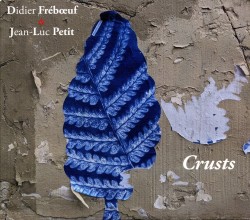 Bringing novel sounds to a reed/piano duo doesn’t have to venture into the electronic world however. On Crusts (FOU records CD 48 fourecords.com) for instance, French improviser Jean-Luc Petit’s playing tenor and soprano saxophones and bass clarinet is amplified by the elaborations from Didier Fréboeuf on piano, objects and clavietta, a mouth-blown piano keyboard instrument with accordion-like tones. Meanwhile Norwegian Isach Skeidsvoll on Chanting Moon, Dancing Sun – Live at Molde International Jazz Festival (Clean Feed CF 617 CD cleanfeed-records.com) and Japanese Yoko Miura on Zanshou Glance at the Tide (Setola Di Maiale SM 4620 setoladimaiale.net) both use a similar handheld instrument, the melodica, with its mouthpiece and keyboard sounds in their duets with Lauritz Skeidsvoll playing soprano and tenor saxophones and Italian soprano saxophonist Gianni Mimmo respectively.
Bringing novel sounds to a reed/piano duo doesn’t have to venture into the electronic world however. On Crusts (FOU records CD 48 fourecords.com) for instance, French improviser Jean-Luc Petit’s playing tenor and soprano saxophones and bass clarinet is amplified by the elaborations from Didier Fréboeuf on piano, objects and clavietta, a mouth-blown piano keyboard instrument with accordion-like tones. Meanwhile Norwegian Isach Skeidsvoll on Chanting Moon, Dancing Sun – Live at Molde International Jazz Festival (Clean Feed CF 617 CD cleanfeed-records.com) and Japanese Yoko Miura on Zanshou Glance at the Tide (Setola Di Maiale SM 4620 setoladimaiale.net) both use a similar handheld instrument, the melodica, with its mouthpiece and keyboard sounds in their duets with Lauritz Skeidsvoll playing soprano and tenor saxophones and Italian soprano saxophonist Gianni Mimmo respectively.
Used more sparingly than electronics, Fréboeuf’s mouthpiece-attached instrument doesn’t make its appearance until the final track, but even before that his measured responses perfectly complement Petit’s expositions, depending on which reed is used. Squeezed alp-horn like blows and crying treble reflux from the tenor saxophone are met with inner piano string jangles and wood smacks that speed up the interface to gentling connections. More descriptively thickened chalumeau register bass clarinet slaps and snorts move the pianist deeper into pedal point expression on the appropriately named Scab, with the musical skin further exposed with bottom board echoes and brutal key clanging. As piano abrasions pull away, strangled reed cries confirm that the sonic wound still throbs. The clavietta’s music box-like tinkles and shaking variations simply solidify Fréboeuf’s distinctive exposition on Crisp, with Petit’s equally crisp rejoinders on soprano saxophone move into droning telephone-wire-like shrilling without key movements. Dynamic near-honky-tonk keyboard patterns however, push that sequence to the bursting point with the resulting timbral explosion drawing the saxophonist to a forced air and altissimo squeaking finale.
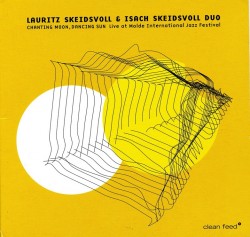 More use is made of the melodica on Chanting Moon, Dancing Sun with the title track based on a do-si-do of that instrument’s barrel-organ-like textures in unison or counterpoint with the saxophone. While the plastic melodica does create an interesting contrast to a reed instrument, as quickly as a modal sequence is advanced Isach Skeidsvoll returns to percussive piano tones as Lauritz Skeidsvoll’s nasal soprano saxophone adds Carnatic-like squeaks. By the conclusion, reed work begins to quiet as intricate piano chording moves forward. Perhaps more a physiological than a musical observation, but despite the Skeidsvolls literally being brothers – Lauritz is two years older than Isach – their playing appears more distant from one another than that of the other duos. Exploring freer playing at points with reed split tones, tongue stops and slide whistle-like squeaks plus energetic piano shifts in and out of tempo, their fluid improvising also veers toward pseudo gospel dynamics. Earlier spiritual music inferences come out into the open on the concluding From the Wasteland I Ascend. Waves of ecclesiastical piano glissandi and intensified saxophone honks and squawks suggest Southern Baptists feeling the spirit, with the potent beat all consuming but somewhat odd coming from Norwegian musicians at a Norwegian jazz festival.
More use is made of the melodica on Chanting Moon, Dancing Sun with the title track based on a do-si-do of that instrument’s barrel-organ-like textures in unison or counterpoint with the saxophone. While the plastic melodica does create an interesting contrast to a reed instrument, as quickly as a modal sequence is advanced Isach Skeidsvoll returns to percussive piano tones as Lauritz Skeidsvoll’s nasal soprano saxophone adds Carnatic-like squeaks. By the conclusion, reed work begins to quiet as intricate piano chording moves forward. Perhaps more a physiological than a musical observation, but despite the Skeidsvolls literally being brothers – Lauritz is two years older than Isach – their playing appears more distant from one another than that of the other duos. Exploring freer playing at points with reed split tones, tongue stops and slide whistle-like squeaks plus energetic piano shifts in and out of tempo, their fluid improvising also veers toward pseudo gospel dynamics. Earlier spiritual music inferences come out into the open on the concluding From the Wasteland I Ascend. Waves of ecclesiastical piano glissandi and intensified saxophone honks and squawks suggest Southern Baptists feeling the spirit, with the potent beat all consuming but somewhat odd coming from Norwegian musicians at a Norwegian jazz festival.
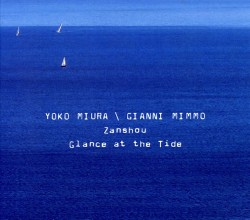 Miura and Mimmo offer a different and distinct duo conception on Zanshou Glance at the Tide, another live concert. That’s because the pianist and saxophonist play solo on the first two tracks, only uniting for Further Towards the Light, the extended finale. The first track is a threnody for the Finnish bassist Teppo Hauta-aho, one of the many Occidental musicians with whom Miura has played. Yet melancholy is mixed with muscle as her light touch is overtaken by pressurized energy and key slaps at near player-piano speed. Continuing up the scale with chiming notes and plucks; melodica puffs also echo sparingly. With detours into suggestions of Charles Mingus and Jimmy Rowles themes on the second track, the saxophonist is both lyrical and literal, building a mellow exposition from tune variations mixed with double tonguing, tonal slides and the odd screech. As a duo the two also scramble expectations by introducing a lengthy meditation on ‘Round Midnight as a secondary motif. At first Miura adds energy with bell tree shakes and melodica trills that underline Mimmo’s more emotional pitch undulations and near circular breaths. With each taking turns interpreting the Thelonious Monk ballad, she not only comps aggressively but uses the mouth-blown keyboard to double and strengthen the saxophonist’s ascending and descending single line expositions. The entire piano keyboard is brought into play in the final sequence, uniting textures from all three instruments for a broadened referential conclusion.
Miura and Mimmo offer a different and distinct duo conception on Zanshou Glance at the Tide, another live concert. That’s because the pianist and saxophonist play solo on the first two tracks, only uniting for Further Towards the Light, the extended finale. The first track is a threnody for the Finnish bassist Teppo Hauta-aho, one of the many Occidental musicians with whom Miura has played. Yet melancholy is mixed with muscle as her light touch is overtaken by pressurized energy and key slaps at near player-piano speed. Continuing up the scale with chiming notes and plucks; melodica puffs also echo sparingly. With detours into suggestions of Charles Mingus and Jimmy Rowles themes on the second track, the saxophonist is both lyrical and literal, building a mellow exposition from tune variations mixed with double tonguing, tonal slides and the odd screech. As a duo the two also scramble expectations by introducing a lengthy meditation on ‘Round Midnight as a secondary motif. At first Miura adds energy with bell tree shakes and melodica trills that underline Mimmo’s more emotional pitch undulations and near circular breaths. With each taking turns interpreting the Thelonious Monk ballad, she not only comps aggressively but uses the mouth-blown keyboard to double and strengthen the saxophonist’s ascending and descending single line expositions. The entire piano keyboard is brought into play in the final sequence, uniting textures from all three instruments for a broadened referential conclusion.
Overall, using add-ons or playing acoustically each duo distinctively defines its territory and the combination.



